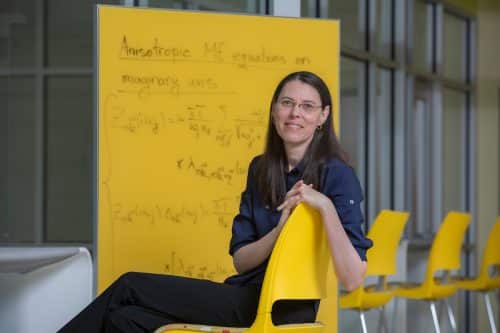Superconductors have changed modern technology, from MRI machines to particle accelerators to Maglev trains, and they have the ability to do even more.
When cooled below a material-dependent critical temperature, a superconducting material’s key property is that it can conduct electricity without resistance. However, this exceptional quality comes at a price: The most common niobium-based superconductors function at very low temperatures, around 10 degrees Kelvin (–442 degrees Fahrenheit or –263 degrees Celsius).
Scientists have been looking for superconductors that can perform at higher critical temperatures for the past 50 years, ideally room temperature, although 100 degrees Kelvin (–173 degrees Celsius or –279 degrees Fahrenheit) is acceptable for a variety of applications. Unfortunately, manufacturing the high-temperature superconductors that have previously been identified is problematic.
Binghamton University Associate Professor of Physics, Elena Roxana Margine’s work in computational physics could pave the way for major advancements in the subject. She obtained three National Science Foundation (NSF) grants to help with this endeavour last summer. The purpose of this project is to combine the complementary strengths of three software packages produced by the grant’s PIs (principal investigators), as well as built-in compatibility layers for important density-functional theory codes.

As a result of this cyberinfrastructure, scientists will be able to do systematic and predictive calculations of attributes that will help them build next-generation materials for energy, computing, and quantum technologies. Superconductivity is a complicated mechanism in which electrons interact with atomic vibrations in a substance. Modeling this relationship accurately necessitates not only complicated computer codes and calculations, but also massive processing power.
Researchers may be able to forecast which materials would excel as superconductors using computational modelling, particularly those that can operate at higher critical temperatures. Understanding how they function at the atomic level could lead to breakthroughs in energy storage, medicine, electronics, transportation, and possibly quantum computing in the future.
“What we are trying to do is develop methods with improved prediction capabilities that will pave the way for rational design of new superconductors,” Margine said.








